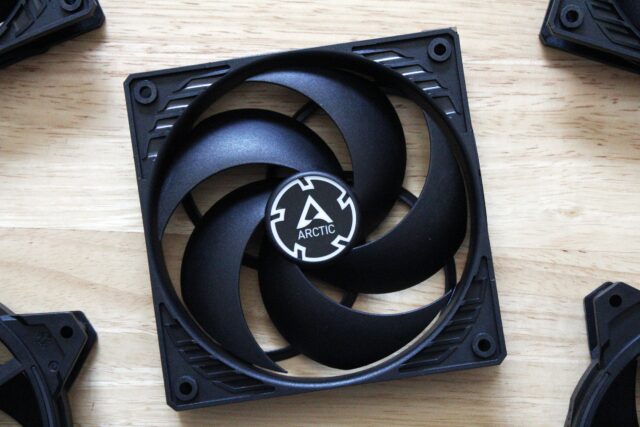Most people have a fan controller installed on their computer, but they don’t know how to use it. This guide will teach you how to optimize your fan controller for maximum cooling and efficiency.
The speedfan is a free software that allows users to control their computer’s fan speed. It can be used on Windows or Mac computers.
A fan controller program is one of the finest weapons you may have in your arsenal when it comes to cooling your PC. It enables you to control airflow and temperature to ensure that your computer runs as effectively as possible.
But which Windows fan controllers are the best? There are a lot of free and paid alternatives on the market right now, but some of them aren’t worth the money. That’s why we’ve put together a list of 7 free and premium fan controller programs for Windows. We’ve broken down what each one has to offer as well as how to utilize them!
The following are the top 7 fan controller programs for Windows:
- SpeedFan
- Link 4 by Corsair
- HWMonitor
- EasyTune 5 is a software program that allows you to tune your
- NZXT CAM
- Monitor Argus
- MoboMonitor
Also see: 5 Windows 10 Floor Plan Software
SpeedFan (#1)
SpeedFan is a fan controller program that keeps track of temperature and fan speeds. It shows the fan speed in RPM (rotations per minute) (RPM). SpeedFan also has an onscreen thermometer that shows the current core temperature of the CPU.
Other installed fans’ fan speeds may also be read by SpeedFan through their fan headers. Furthermore, SpeedFan may function as an alarm clock.
It is one of the oldest tools available, having been in use for more than 15 years.
SpeedFan may be launched in two ways:
- System Tray > Right click on the fan speed monitor (the circular arrow icon) -> Properties => Choose “Start Monitoring” from menu or
- To use it, open a Windows Command Prompt window and type SPEEDFAN.
Features to look for:
- Keep an eye on the temperatures of the CPU cores and the fan speeds.
- The current core temperature of the CPU is monitored via an on-screen thermometer.
- Using a grid, control fan speed such that the fan turns on and off to maintain the appropriate temperature.
- Control fan speeds by percentage (e.g., 50% is half of 100%) or turn fans off entirely if they aren’t required.
- Show the fan speed in RPM (revolutions per minute) or percentage ( percent )
- Fan data from other installed fans may be accessed through their fan headers.
- Set temperature and fan speed alerts. When the required values are achieved, an alarm will ring.
How to apply:
Download and install SpeedFan on your Windows computer. Double-click the fan controller software’s icon in the “Start” menu on your desktop, or choose it from an open application list in the taskbar system tray applet. Allowing the fan controller software to access fan and temperature data requires clicking “Allow” in a dialogue box that appears.
Click here to get SpeedFan.
Corsair Link 4 is the second item on the list.
For PCs, laptops, and Macs, Corsair Link is fan control software. You may configure your fans to cool down or speed up based on the temperature of your system, even if it’s in a closed case, using Corsair Link’s fan-speed control interface. Fan profiles, fan curves, and Corsair Link Dashboard notification settings are also available.
The high performance of CorsairLink is due to its great interoperability with Corsair products, as well as sophisticated capabilities that enable you to completely configure fan curves and regulate fan speeds.
Features to look for:
- Controllable fan speeds and fan curves;
- For high-performance CPU cooling, Corsair Link is compatible with a broad range of fan controllers, including Noctua NAUTILUS SE fans.
- Fan speeds, CPU temperatures, and coolant flow rates are all monitored.
- With comprehensive graphs for each fan on your system, you’ll have complete control over your fans.
- CorsairLink is also the only program on our list that enables you to configure separate fan speed settings for each fan on your system, allowing you to achieve the ideal mix of noise and airflow while cooling your PC components.
- CorsairLink shows the temperatures of all fans as well as their speeds, as well as the temperatures of the water in your AIO cooler.
How to Apply:
– Install the fan controller software on your computer and follow the on-screen directions.
– To access the fan control interface, click the icon in the tray or right-click the taskbar menu.
– Select the fan you wish to activate (or deactivate), then use the slider to change the fan’s speed, or manually enter a value into the box next to the slider for greater precision.
– When you close the fan control interface, the fan will continue to operate at the speed you selected until you open the program again.
— For MacBooks, follow the identical procedures as in step one, but choose Mac instead of PC when choosing a fan.
– Why is it required: Allows you to adjust the fan speed for a cooler or hotter PC. If your PC’s fan is malfunctioning, you may use this program to change speeds and “repair” the issue with the operating system.
– Best for: Those with PCs that aren’t performing as well as they should be and who need fan speed changes.
Also see 10 Ways to Get to the Command Prompt in Windows 10
HWMonitor is the third item on the list.
HWMonitor is a Windows-based hardware monitoring and fan control application. The program keeps track of the health of the PC’s primary sensors, including voltages, temperatures, fan speeds, and motherboard sensors.
It also shows RPM (revolutions per minute), voltage, power, and speed in kilovolts, all with percentages.
The program also has alarms that will warn you if your CPU reaches specific temperatures, as well as the ability to automatically restart your computer in the event of a fan failure.
Characteristics
- Data is recorded, and fan speeds are automatically changed.
- Live monitoring of fan speed, temperature, voltage, & more
- The software also provides graphs that show all of the data gathered over time.
- Fan control may be done manually or via a custom fan curve.
How to apply:
– Download and install HWMonitor
– Choose the fan curve and speed that you wish to utilize (you can also set it back to automatic)
– The software analyzes data from sensors when fan speeds are automatically changed. The software will sound an alert if the number of fan revolutions per minute or the temperature measurements suddenly change.
– You may also manually change fan speeds by rotating the fan speed knob and looking at the adjusted graph.
Configuration parameters for fan curves, such as minimum speeds, maximum speeds, or particular temperatures as triggers, may be used to configure the program.
4. SimpleTune 5
EasyTune fan control is an all-in-one fan controller that includes everything you’ll need for a straightforward fan control experience. This software allows users to build profiles that allow them to adjust fan speed and sound level based on their preferences.
Three new functions have been added to the current version of EasyTune: I fan control for fanless graphics cards, ii) fan speed control in Windows OS, and iii) fan monitoring.
Features to look for:
- Fan control for graphics cards that don’t have fans
- Windows OS fan speed control and monitoring
- There is a wide variety of CPU fan speeds to choose from.
- Up to three unique sound levels may be selected while switching profiles.
How to apply:
STEP 0: Get the app and install it. Follow the on-screen instructions.
STEP I: Using fan controlling presets or fanless graphics card settings, create profiles based on your sound level or fan speed preferences.
STEP II: Drag the sliders to the appropriate fan speed and sound level for the fan controller profile.
STEP III: In the EasyTune fan control settings box, click “Apply” to preserve your adjustments.
NZXT CAM (NZXT CAM) (NZXT CAM
The NZXT CAM fan controller program assists you with fan speeds, curves, and other fan-related settings for your PC.

For many PC builders, the program is the go-to fan control option. NZXT CAM offers all you need to keep a careful watch on your system’s fan speeds and temperatures with simple notifications thanks to its elegant UI. What’s the greatest part? It connects to one of the four fan headers on your motherboard!
It shows CPU load, GPU load, fan status, fan curves, and more on the app, which also shows CPU load, GPU load, fan status, and more!
Characteristics
- Windows XP, Vista, and Windows 7 are all supported.
- Before you buy, you can try the fan controls for free for up to 30 days with no restrictions.
- You may adjust the ON/OFF time of your fans on their own or at various intervals using fan control settings; you can also select how quickly the fan spins while it is ON.
- Multiple fans are supported.
- Support for BIOS fan control, which allows you to create a fan profile in BIOS and then load it from software to automate fan speed adjustments across your system.
- Comes with a dashboard that shows all of the settings for each fan at a glance, which is very helpful if you have several fans in your system.
- Supports internet-based fan control through PC or smartphone.
- Can create a fan profile with the desired fan speed and on/off time for a certain event (such as computer startup, shutdown, sleep)
How to apply:
Install it by downloading it from the official website (link). Launch the program to keep track of all elements of your computer in one place.
– Best for: Those who wish to monitor their PC’s fans and temperatures but don’t require fan curves or particular fan profiles.
Argus Monitor (No. 6)
One of the fan control softwares I suggest for Windows PCs is the Argus Monitor fan controller software. It features a user-friendly interface and an intuitive design, making it simpler to use after installation.
Argus Monitor will appear as a system tray applet once installed, so you won’t have to open it all the time. You may minimize the fan controller program to conserve space on your desktop until you need to modify a configuration or check current fan speeds again.
The fan settings are also conveniently in one location, so you don’t have to go through several menus and press multiple buttons only to figure out which fan is causing the issue, assuming one exists.
Additionally, Argus Monitor has a fan speed management feature that allows you to automatically adjust your computer’s fan speeds based on what you want it to perform at different times, such as while viewing movies or playing games.
Argus Monitor’s main characteristics
- On the same page, keep track of fan speeds and temperatures.
- Easy access to fan settings or any other tab in the fan controller software thanks to an intuitive design.
- ArgusMonitor shows current fan speeds as a system tray icon.
- For optimum monitoring of all components in your PC, there are up to 18 fan and temperature sensors.
How to apply:
After you’ve installed it, start it up on your PC and go through all of the fan settings and sensor selection choices.
Set your desired fan speeds for each fan or use automated fan speed control based on what you want it to perform at different times, such as while you’re playing games or viewing movies.
Make a backup of your fan controller software so that you can restore it if anything goes wrong, such as during an upgrade.
On Argus, you can keep track of fan speed, temperature, and other fan parameters. Regularly check the fan control software for the best fan speeds and fan sensor choices.
Also see: How to Use Chrome in Full Screen Mode on Windows and MacOS
MoboMonitor is number seven on the list.
MoboMonitor is a Windows fan controller program that monitors all of your motherboard sensors in real time and controls fan speeds based on CPU temperature, voltage, and other factors.
Data from moboMonitor is collected from SMSC on Motherboard and Fan sensor Inputs are read via SMBus & I²C Communication Protocols
Features to look for:
- Monitoring temperatures & voltages on motherboard for real time updates from CPU or other components such as GPU.
- Allows PWM instructions, manual fan speed control, and automated fan speed synchronization to be used to regulate fan speeds.
- Supports up to 16 fan sensors for comprehensive monitoring of your PC’s hardware.
How to apply:
Install MoboMonitor on a Windows PC with a motherboard that supports SMBus or I2C connection and includes fan sensors.
For optimum fan speed management, easily check fan speeds and monitor CPU temperature levels.
Manual fan control or automatic fan synchronization at certain periods of the day may be found in the fan settings menu.
Monitor all fans on your PC with moboMonitor fan controller software by inputting motherboard sensors data via SMSC & SMBus.
Monitor fan and temperature sensors to keep fan speeds under control.
Every computer requires fan controller software. They’re a smart purchase since they enable you to control the fan speed and keep your computer operating smoothly throughout lengthy gaming sessions or while viewing web sites with plenty of graphics. However, keep in mind that fan controllers come in a variety of styles, so check reviews before making a purchase!
Articles Related to This:
The gpu fan control software is a software that allows users to monitor and control the speed of their graphics card. There are 7 different programs that are optimal for Windows and Mac.




